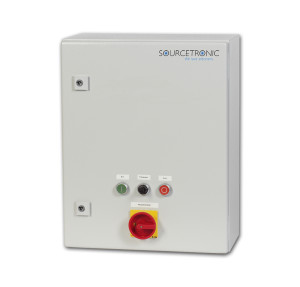Pump control
Pumps and pump controls are an indispensable part of today’s technology. Pumps are mainly used for cooling various systems or transport of liquids. Consequently, their requirements and the pump control are significantly different. Smaller pumps must be controlled completely differently than larger pumps with more power. Even the starting and the braking process of the different pump sizes differ immensely from each other. This requires completely different properties of the pump control.
What is a pump control and what is its purpose?
The controller controls the pump speed and thus the output of the pump. The input variables are given by various sensors, such as flow meters and level sensors. Then information triggers the pump controller, which then adjusts the speed of the pump to the optimal. A simple way of controlling pumps is the use of inverters, converters or frequency inverters. The rotational speed is varied by controlling the amplitude, or by changing the frequency. By using the inverter, the control works very effectively and quickly, which is reflected in the good controllability of the pumping plants again .
The pump control by frequency inverter
A frequency inverter is an inverter that generates an AC in one or more phases of a variable- frequency and voltage output current. With this vice oriented output value a three-phase motor is then driven and controlled. The operating principle of the inverter is that an in-depth exchange size is first rectified in their respective phases with diodes and filter capacitors as an intermediate size and is then inverted by means of a controlled transistor. The output frequency and the output voltage/current of each phase can be regulated by an integrated circuit control. The drive for controlling the pump control can be accommodated in either the integrated pump or in cabinets. The IP code of the cabinet for the control system must provide protection against dust, water overheating, as well as electromagnetic and mechanical interference.
Advantages of a pump control with frequency inverter
Pump controllers are available in many versions, but the option to frequency inverters is one of the most elegant types. By controlling the frequency one can, for example, the capacity for circulation pumps adjust the actual requisition flexible and thus achieve high savings in energy consumption of the pump system. The pump controller thus has the property of energy efficiency. Especially in industrial environments with variable delivery volumes can thus achieve high savings potential. Furthermore, many programs are available for pump control that are easy on the engines and thereby minimise maintenance costs. Another plus is the fast controllability of the pumping system, the inverters in the pump control react in a split second to change the sensors and can compensate and make improvements very quickly.
« Back
